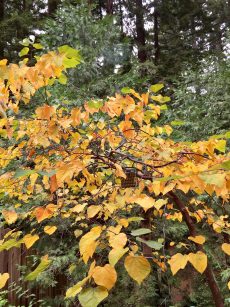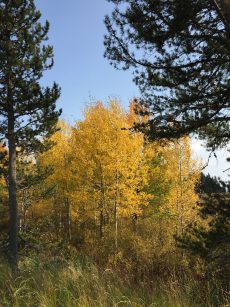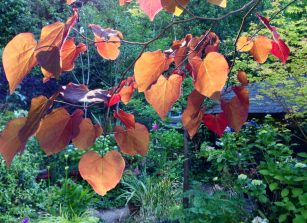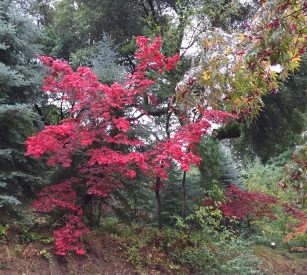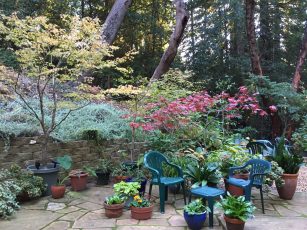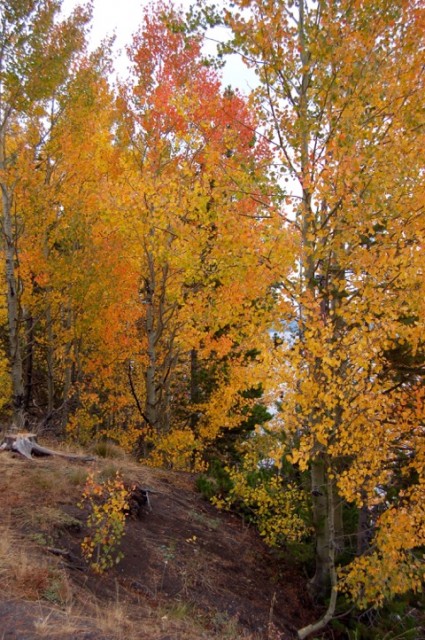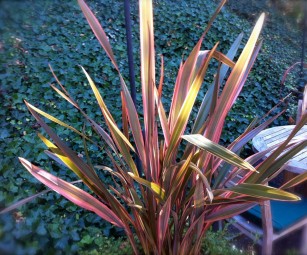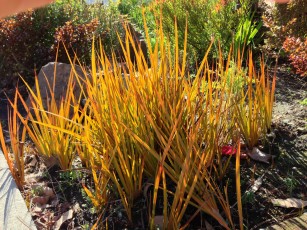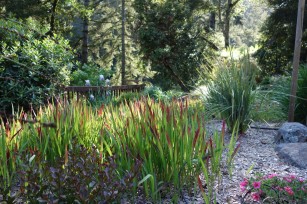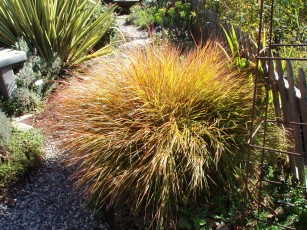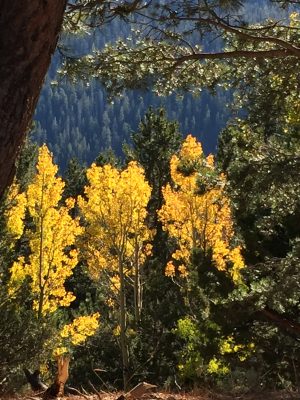
Soon I?ll be hiking in the Sierra among the native dogwood and hoping I?m not too late to see fall foliage. Last year I enjoyed the display of Quaking Aspen near Ebbetts Pass on Highway 4. Did you know that a massive grove of 47,000 aspen in Utah is one of the largest organisms on the planet? They all share the same genetic material and a single root system. There is a contender for this renown in Oregon where a honey mushroom measuring 2.4 miles across lives in the Blue Mountains. Interesting stuff.
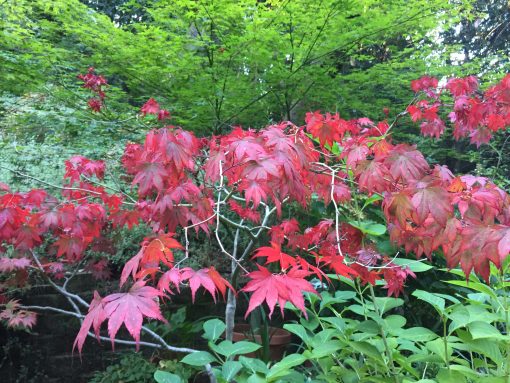
Around here I?m just starting to see some trees and shrubs put on their coat of many colors. In my own yard, I have a Bloodgood Japanese maple that has been in full color for a couple weeks now. None of my other maple varieties are showing any color but that?s okay as I?ll be able to enjoy the upcoming show for many months. That is, if strong winds don?t dry out the leaves prematurely. I?ve watered well hoping this won?t happen. Weather conditions play a major part in the intensity of fall color. The time of year is nearly consistent but some years the show is more dramatic than others. The best conditions for intense leaf color to develop are dry sunny days followed by cool, but not freezing nights.
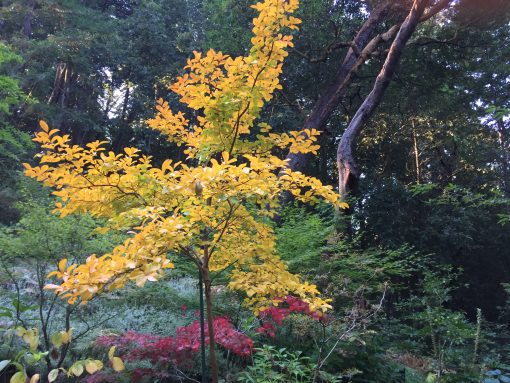
The vivid colors in a leaf are always there. They are just masked by the green chlorophyll which is busy making food by photosynthesis while the sun shines. Come autumn, shorter days and cooler temperatures cause the trees to switch into energy-storage mode and their leaves stop producing chlorophyll. For the few weeks before the leaf falls to the ground it is colored only by natural pigments. It’s these colors – red and purple anthocyanins, yellow and orange carotenoids – that make fall foliage so glorious, sometimes anyway.
Which plants put on the best show in our area? Here are some of my favorites.
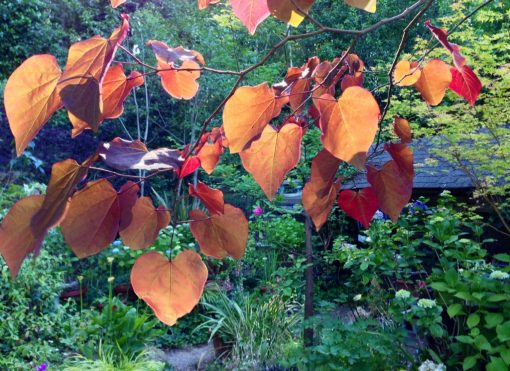
California native, Cercis occidentalis (Western redbud) turns yellow or red in the fall if conditions allow. This plant is truly a four-season plant starting in spring with magenta flowers, then leafing out with apple green heart shaped leaves. Colorful seed pods give way to fall color. This small native tree or large shrub does well as a patio tree in gardens with good drainage.
Other native plants like spicebush and Western azalea turn yellow or gold in the fall. A native vine that lights up with the onset of autumn is Rogers Red California grape. If you have an arbor, wall or fence that needs covering quickly this is your plant. The green and gray leaves are transformed in autumn into great draperies of rich, scarlet leaves with clusters of summer fruit turning all shades of purple.
Edibles that turn color in the fall include blueberries, pomegranate and persimmons.
Trees and shrubs that do well in our area and provide fall color include Easterm redbud, Chinese flame tree (Koelreuteria bipinnate), ginkgo, Idaho locust, Chinese pistache, crape myrtle, witch hazel, all maples, liquidambar, katsura, dogwood, locust, cherry, crabapple, oakleaf hydrangea, barberry and smoke tree.
Now through late fall is a good time to shop for trees that change colors because you can see in person just what shade of crimson, orange, scarlet or gold they will be.

